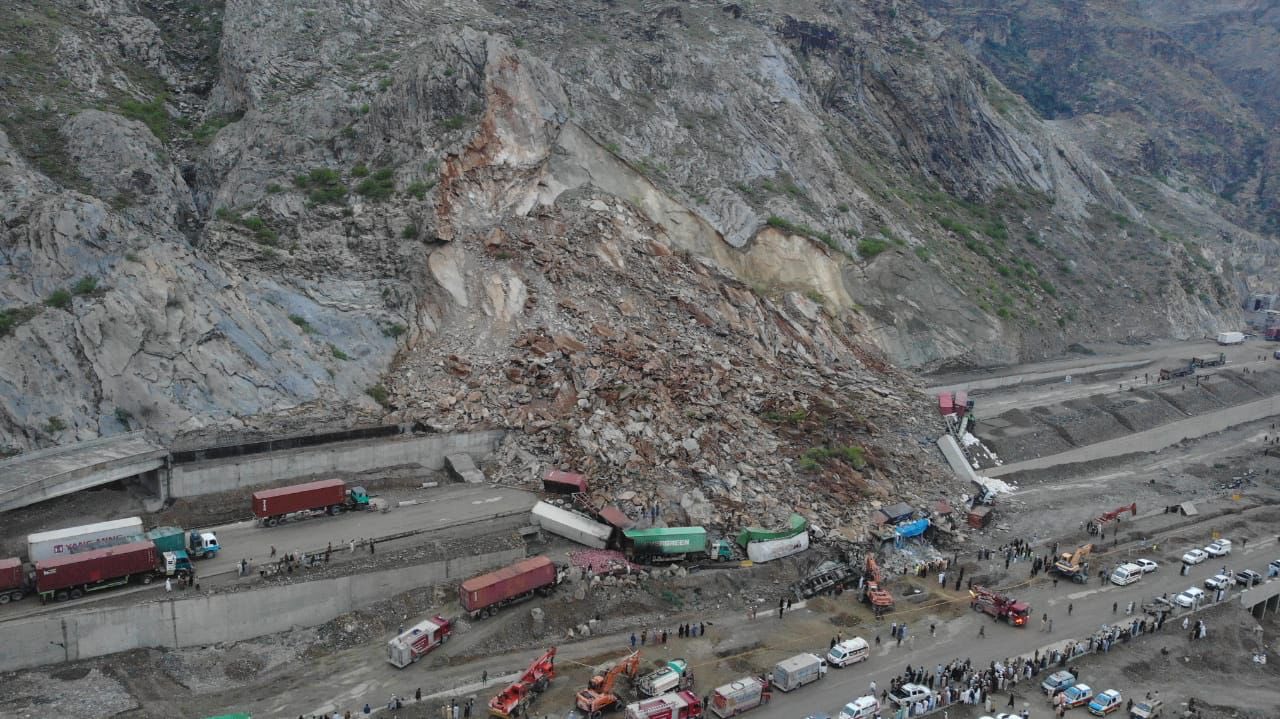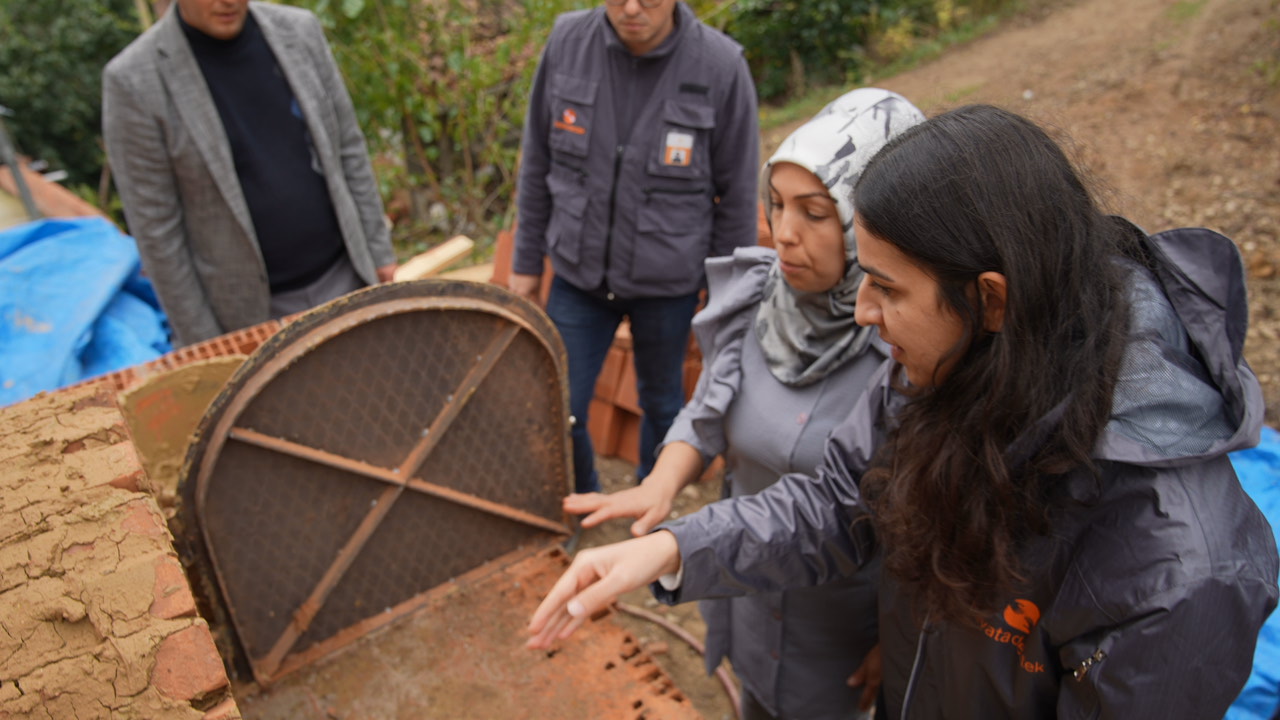What we’re watching: Weekly disaster update, April 24

We know all too well that disaster can strike anytime, anywhere in the world. Some disasters make headlines; others do not. Here at the Center for Disaster Philanthropy (CDP), we monitor the status of disasters worldwide and compile a list of the ones we’re tracking weekly, along with relevant disaster-related media coverage.
Here’s what we’re watching for the week of April 24, 2023.
New or Emerging Disasters
Landslide – Pakistan: A landslide hit a major highway in northwestern Pakistan near the border town of Torkham before dawn on April 17. Officials estimated that two dozen trucks were buried as they waited to cross into Afghanistan. The large boulders and debris slowed rescue and recovery efforts as heavy machinery was required.
On April 22, officials said the death toll had risen to eight. Heavy rainfall during the night may have triggered the slide, but one official said work had been ongoing for months to expand the road in the hills near the border post. Dave Petley of the University of Hull wrote on The Landslide Blog that the toe of the slope appeared to have been cut as part of construction work, which may have enabled the instability.
Tornadoes – Oklahoma: As of April 21, the National Weather Service in Norman had confirmed 12 tornadoes in central Oklahoma following the April 19 outbreak. Two tornadoes were rated as EF-3, one in Cole and another south of Pink.
The tornadoes resulted in the deaths of at least three people. The tornado in Cole, a town of more than 600 people about 30 miles south of Oklahoma City, caused significant damage to infrastructure. Satellite images of the affected areas before and after the tornadoes demonstrate the devastation.
Governor Kevin Stitt requested a major disaster declaration from the federal government for McClain and Pottawatomie counties on April 23. The Oklahoma Department of Emergency Management and Homeland Security estimates $9 million in response and debris removal costs in the two counties. Damage assessments are ongoing, but officials say more than 2,000 homes and apartments have been impacted.
For more, see our 2023 US Tornadoes disaster profile.
Previous/Ongoing Disasters
Sudan – Complex Humanitarian Emergency: Fighting between the Sudanese Armed Forces (SAF) and Rapid Support Forces (RSF) persisted on April 23 for a ninth consecutive day. The army General Abdel Fattah al-Burhan, and the RSF leader, General Mohamed Hamdan Dagalo, are engaged in a power struggle that has erupted into open conflict.
According to the UN Office for the Coordination of Humanitarian Affairs (UNOCHA), at least 427 people have been killed and over 3,700 injured. UNOCHA reports, “Acute shortages of food, water, medicines and fuel, and limited access to communications and electricity, continue to be reported.”
The World Health Organization said on April 21 it had verified 11 attacks on healthcare, with the remaining facilities in Khartoum and Darfur states nearly non-functional. In addition to impacts on the country’s healthcare system, the fighting has resulted in limited food and water supplies, leading to price increases.
Thousands of civilians have fled Khartoum, Sudan’s capital. Several humanitarian organizations have suspended operations, including the World Food Programme (WFP), which confirmed that three employees were killed in North Darfur. The WFP warned the violence in Sudan has the potential “to plunge millions more into hunger.”
Sudan was already experiencing a years-long complex humanitarian emergency, and CDP has been monitoring it as one of our Level 1 emergencies. For more, see our Weekly disaster update post from April 10, which features Sudan and provides more context.
In addition to the disasters listed above, we actively monitor the following disasters or humanitarian emergencies. For more information, see the relevant disaster profiles, which are updated regularly.
- Afghanistan Humanitarian Crisis
- COVID-19 Coronavirus
- Horn of Africa Hunger Crisis
- 2022 Pakistan Floods
- Tropical Cyclone Freddy
- 2023 Turkey-Syria Earthquake
- Ukraine Humanitarian Crisis
U.S. Midwest Low-Attention Disasters
The Midwest is regularly faced with low-attention disasters that affect people across the region. CDP’s Midwest Early Recovery Fund (ERF) effectively funds efforts that catalyze equitable disaster recovery.
These are some of the latest disasters and related news the ERF team is monitoring:
- A fire in Custer County, Nebraska, burned more than 100,000 acres, damaged three homes and destroyed hay. As of April 21, the fire was 85% contained. This is just one of several fires that have affected the state in recent weeks.
- Many communities and officials across the U.S. are concerned about spring flooding following a very wet winter that produced significant snowpack. Minnesota snowmelt has begun, and towns along the Mississippi River may soon flood. The Quad Cities on the Illinois-Iowa border have been fighting floods for years, and the city of Davenport, Iowa, is making preparations.
Complex Humanitarian Emergencies – Myanmar
Many places worldwide are experiencing emergencies caused by conflict, climate change, drought, famine, economic challenges and other conditions that combine to create a complex humanitarian emergency (CHE). CDP maintains complete profiles on several CHEs, and what CDP considers Level 1 CHEs are profiled in this weekly blog post and tracked.
According to ACLED’s Conflict Severity Index, in 2022, Myanmar experienced the third most intense level of violence after Ukraine and Syria. The country’s conflict is complex and involves hundreds of non-state armed groups fighting against the military junta and joining other ethnic-based rebel organizations that have been active for decades.
In the two years since Myanmar’s military seized power, declaring fraud in the general election won by the National League for Democracy, the fighting has significantly increased humanitarian needs and attacks on civilians persist. An Assistance Association for Political Prisoners report said Myanmar’s military killed 157 children in 2022. An April 11 attack by Myanmar’s junta military on a village celebration in the central Sagaing region left at least 186 villagers dead, including children.
The New Humanitarian recently reported on the destruction of health facilities, which reduces people’s access to healthcare. According to UN figures, as of April 10, more than 1.8 million people remained displaced across the country. According to Myanmar’s 2023 Humanitarian Response Plan (HRP), which lays out the shared vision of how to respond to the assessed and expressed needs of the affected population, one in three, or 17.6 million people, are now in humanitarian need, an increase of one million people since the start of 2021.
The Rohingya people have faced decades of systematic discrimination, statelessness and targeted violence in Myanmar’s Rakhine State. Violent attacks led hundreds of thousands of Rohingya to flee to Cox’s Bazar, Bangladesh, in 2017. Hundreds have fled by boat from desperate conditions in Myanmar and camps in Bangladesh. In late March, more than 180 Rohingya Muslims landed in Indonesia’s Aceh province. Last year was the deadliest for Rohingya at sea for years.
Upcoming webinars

May 11: Older adults and disasters: Overcoming stereotypes and strengthening inclusion

June 8: Survivor and community-led response: Putting people first in a crisis
What We’re Reading
- Racial disparities are working against disaster recovery for people of color. Climate change could make it worse – CNN: Studies have shown that many marginalized people have faced socioeconomic factors that relegate them to living in environmentally hazardous areas or substandard housing structures, increasing disaster exposure and vulnerability. CDP’s Sally Ray, quoted in the article, mentioned the importance of working locally and getting to know the community.
- Nonprofits Led by People of Color Get Less Funding Than Others – The Chronicle of Philanthropy: A survey of more than 200 social services and arts nonprofits across the U.S. that focus on the needs of particular racial and ethnic groups revealed that nonprofits serving people of color or are led by nonwhite executive directors have a more challenging time getting the funding they need than other organizations.
- Need for mental health providers has grown more urgent in the year since Marshall fire – The Colorado Sun: The first anniversary of the Marshall fire led to a swell of people looking for mental health resources. However, the number of people needing mental health services has risen while providers remain in short supply. The Community Foundation of Boulder County is one philanthropic organization working to support mental health services.
- Somalia in need of humanitarian aid as it faces worst drought in decades – PBS: “Somalia faces one of the world’s most acute humanitarian crises. The country is seeing its worst drought in 40 years, famine and an ongoing armed conflict. Humanitarian agencies warn nearly 8 million people, half of the population, are in dire need of assistance.”
- As World Warms, Droughts Come On Faster, Study Finds – The New York Times: “Flash droughts, the kind that arrive quickly and can lay waste to crops in a matter of weeks, are becoming more common and faster to develop around the world, and human-caused climate change is a major reason, a new scientific study has found.”
- Can this high-level task force drive a debate on climate migration? – Devex: The 2023 World Economic Forum Global Risks Report, for the first time, included “large-scale involuntary migration” in its ranking of the top 10 risks in the next two years. The Climate Migration Council, a group of leaders including former presidents, humanitarians and academics, aims to push for global action on climate-related migration, such as drought and flooding.
Last week a mysterious light baby blue spiral appeared in the Alaska skies. The light was excess fuel released from a SpaceX rocket that launched hours earlier. But the image captured by a professional photographer is still incredible.
